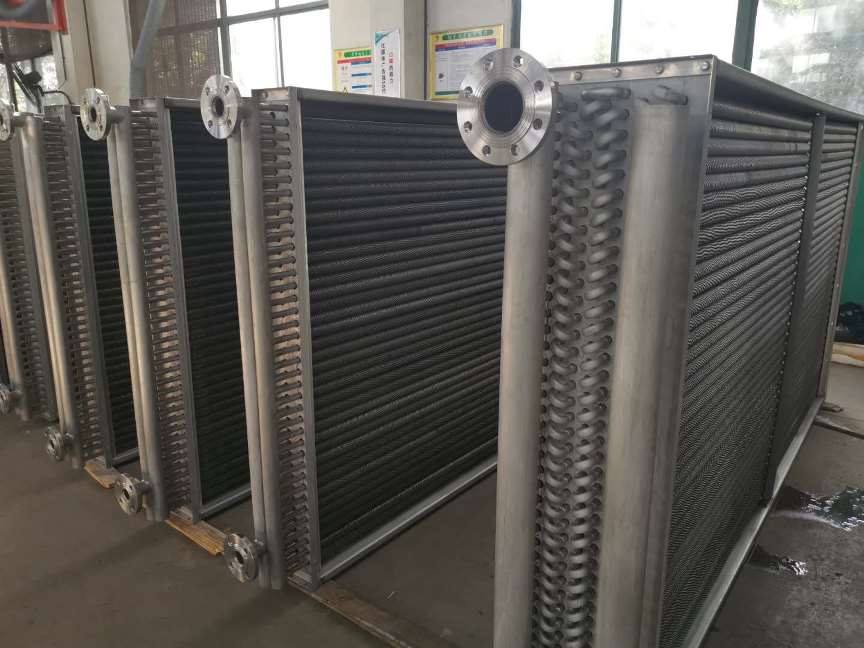Lord Fin Tube-Stainless steel cooler
Stainless steel coolers represent the pinnacle of thermal management technology, combining durability, corrosion resistance, and superior heat transfer capabilities. This comprehensive guide explores the technical specifications, material properties, and industrial applications of these high-performance cooling systems.
What is a Stainless Steel Cooler?
A stainless steel cooler is an advanced thermal management device engineered to dissipate heat efficiently in demanding industrial, commercial, and specialized applications. Unlike conventional coolers, these systems leverage the exceptional properties of stainless steel alloys to deliver reliable performance in corrosive, high-temperature, and high-pressure environments.
Modern stainless steel coolers typically employ finned tube technology to maximize surface area and heat transfer efficiency. This design enhancement allows for more compact units while maintaining or even improving cooling capacity compared to traditional designs.

Stainless Steel Cooler Performance
Stainless Steel Cooler Material Specifications: 304 vs 316 Stainless Steel
The selection of stainless steel grade significantly impacts cooler performance, longevity, and application suitability. The two most common grades used in cooler manufacturing are 304 and 316 stainless steel, each with distinct chemical compositions and performance characteristics.
| Property | Grade 304 Stainless Steel | Grade 316 Stainless Steel |
|---|---|---|
| Chromium Content | 18% | 16-18% |
| Nickel Content | 8% | 10-14% |
| Molybdenum Content | None | 2-3% |
| Corrosion Resistance | Excellent in most environments | Superior, especially against chlorides |
| Cost Factor | Standard (Reference Point) | 25-40% higher than 304 |
| Primary Applications | Food processing, breweries, general industrial | Marine, chemical processing, coastal installations |
| Maximum Service Temperature | 870°C (1600°F) | 800°C (1470°F) |
Technical Insight: The addition of molybdenum in 316 stainless steel dramatically improves pitting resistance in chloride environments, making it the preferred choice for coastal applications, marine vessels, and chemical processing plants where saltwater or chemical exposure is a concern.
Stainless Steel vs Alternative Materials
- Exceptional corrosion resistance
- High mechanical strength
- Superior temperature tolerance
- Long service life (25+ years)
- Hygienic, easy to clean surface
- Minimal maintenance requirements
- Resistant to UV degradation
- Suitable for high-pressure applications
- Limited chemical resistance
- Lower mechanical strength
- Temperature limitations
- Shorter lifespan (5-10 years)
- Potential for bacterial growth
- Higher maintenance in industrial settings
- UV degradation over time
- Pressure limitations
- Prone to corrosion without coatings
- Good mechanical strength
- Moderate temperature tolerance
- Variable lifespan (10-20 years)
- Surface treatments required
- Regular maintenance essential
- Environmental vulnerability
- Lower initial cost
Stainless Steel Cooler Industrial Applications
Chemical Processing
Stainless steel coolers handle corrosive chemicals, acids, and solvents at elevated temperatures. Grade 316L is typically specified for superior pitting resistance.
Temperature Range: -50°C to 400°C
Pressure Requirements: Up to 300 PSI
Power Generation
Used in turbine cooling, transformer oil cooling, and generator hydrogen cooling systems where reliability is critical for continuous operation.
Temperature Range: 20°C to 500°C
Pressure Requirements: 150-600 PSI
Marine & Offshore
Specialized seawater-resistant alloys combat saltwater corrosion in ship engine cooling, hydraulic oil cooling, and offshore platform applications.
Temperature Range: -20°C to 200°C
Pressure Requirements: 100-250 PSI
Food & Beverage
Sanitary designs with polished surfaces meet FDA and USDA requirements for process cooling in breweries, dairies, and food processing plants.
Temperature Range: 1°C to 150°C
Pressure Requirements: 50-150 PSI
HVAC & Refrigeration
High-efficiency designs for commercial building systems, industrial refrigeration, and process cooling with minimal maintenance requirements.
Temperature Range: -40°C to 150°C
Pressure Requirements: 100-300 PSI
Pharmaceutical
Ultra-sanitary designs with electropolished surfaces for reactor cooling, purified water systems, and cleanroom environments requiring validated performance.
Temperature Range: 5°C to 200°C
Pressure Requirements: 75-150 PSI
Stainless Steel Cooler Technical Specifications
Standard Performance Metrics
When specifying stainless steel coolers, engineers consider multiple performance parameters to ensure optimal system integration:
| Parameter | Typical Range | Measurement Standard |
|---|---|---|
| Heat Transfer Coefficient | 300-800 W/m²K | ASME PTC 30 |
| Pressure Drop | 5-30 kPa | ISO 5167 |
| Fouling Factor | 0.0001-0.0005 m²K/W | TEMA Standards |
| Flow Rate | 10-500 m³/h | ISO 4185 |
| Temperature Approach | 3-15°C | ASME PTC 12.5 |
Design Optimization Factors
Modern stainless steel cooler design incorporates computational fluid dynamics (CFD) and finite element analysis (FEA) to optimize performance while minimizing material usage and pressure drop. Key design considerations include:
- Tube Pattern: Triangular, square, or rotated square arrangements affecting turbulence and heat transfer
- Fin Density: Typically 6-16 fins per inch, balancing surface area against pressure drop
- Baffle Design: Segmental, helical, or rod baffles directing flow across tubes
- Nozzle Configuration: Size, orientation, and connection type based on system requirements
- Support Structure: Designed for seismic, wind, and operational loads
Stainless Steel Cooler Maintenance
While stainless steel coolers require significantly less maintenance than alternative materials, proper care extends service life and maintains performance:
| Maintenance Activity | Frequency | Procedure |
|---|---|---|
| Visual Inspection | Monthly | Check for leaks, corrosion, physical damage |
| Performance Monitoring | Quarterly | Track temperature differentials and pressure drops |
| External Cleaning | 6-12 months | Remove debris, dust, and contaminants |
| Internal Cleaning | 1-3 years | Chemical or mechanical descaling if needed |
| Comprehensive Inspection | 3-5 years | Non-destructive testing, thickness measurements |

